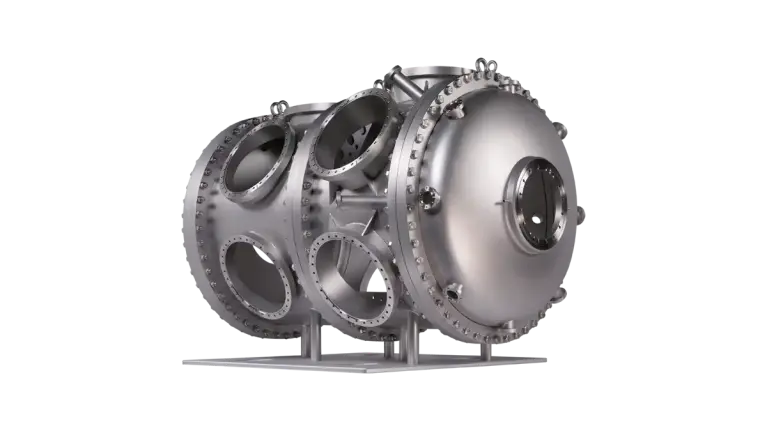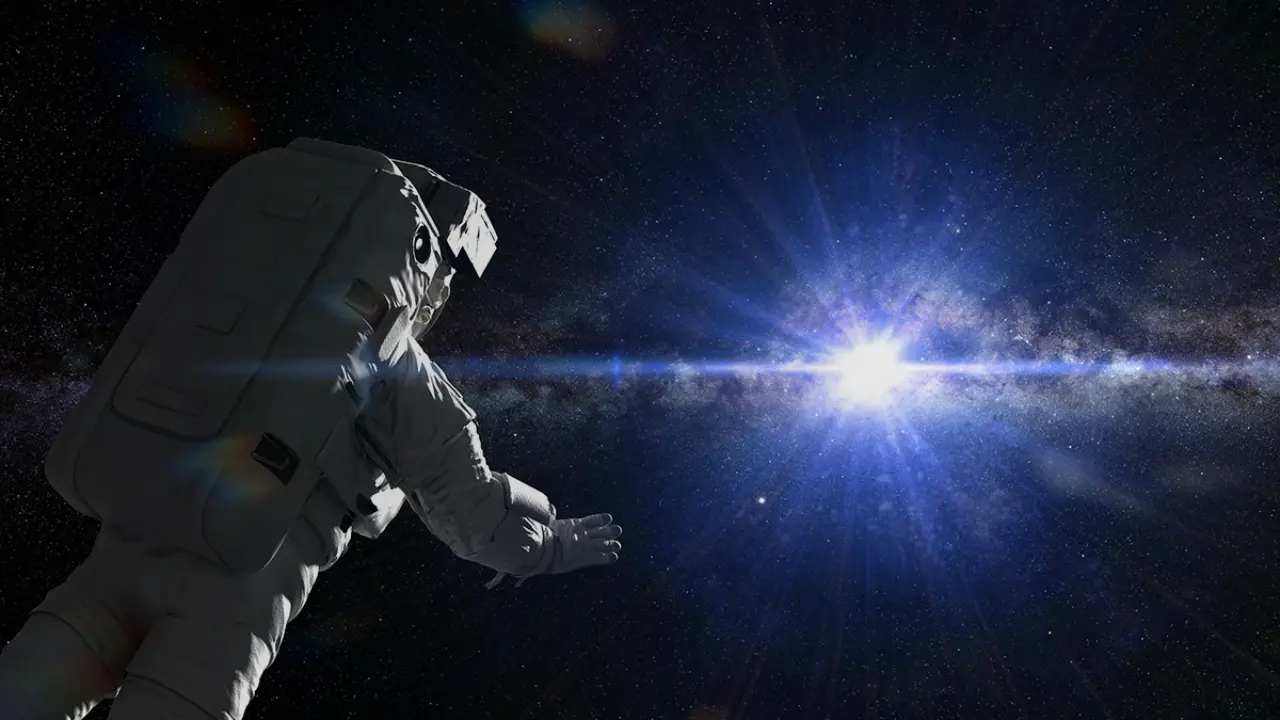Ion thrusters
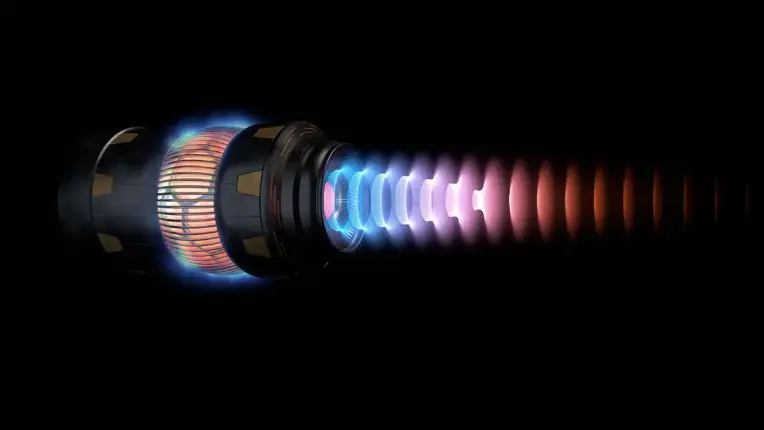
They are used not only as high-thrust propulsion systems that propel spacecraft to distant objects, but also as small propulsion systems used to precisely align telescopes or interferometers.
Learn more about ion thrusters
How do ion thrusters work?
In ion thrusters, gas particles are ionized and accelerated by electric fields. The heavier these gas particles are the higher the thrust resulting in greater propulsive power. For this reason, most applications use xenon as the propellant gas. More recently, nitrogen is also used, for cost reasons. To prevent any electrical charge building up in the spacecraft that is being propelled, the ionized gas is neutralized before it leaves the ion thruster.
Why is vacuum important for space simulation?
Before launching satellites or a space mission for instance to research the surface of Mars thorough testing needs to be performed in advance. Goals of these tests are not limited to investigation of device performance in outer space eg vacuum, but also how they will behave at large temperature differentials. The temperature range can vary between just a few Kelvin to a couple of hundreds of Kelvins when exposed to the sun.
In order to perform these kinds of tests on earth, and depending on the size of the space craft sometimes large or huge vacuum chambers are needed. Besides evacuating these large vessels to as low as p < 10-4 Pa, the test unit itself in addition to the equipment required to maintain these temperatures like shrouds need to be evacuated.
-
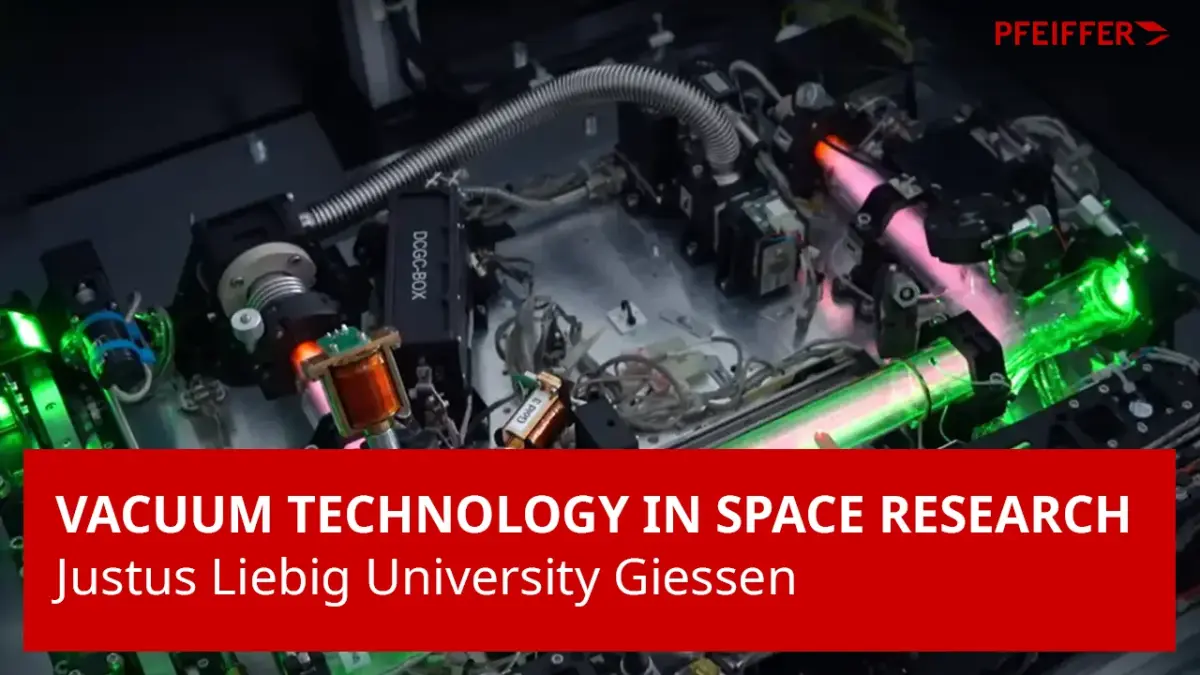
Vacuum technology in space research: Justus Liebig University Giessen
-
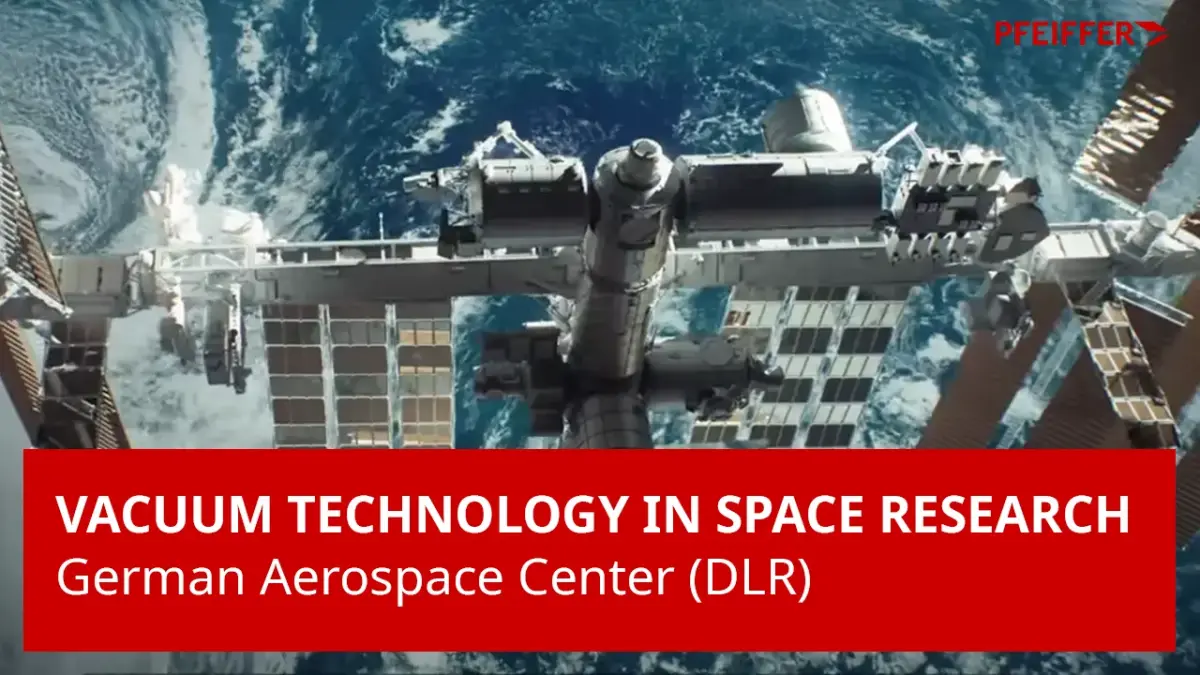
Vacuum technology in space research: German Aerospace Center (DLR)
What are the best vacuum solutions for testing ion thrusters?
In addition to supplying the chamber and the necessary pumps, Pfeiffer also supplies the temperature control system. For the space simulation chamber at the Institute of Plasma Physics and Laser Microfusion (IFPiLM) in Warsaw, for example, a product specially adapted to customer requirements was created on the basis of good collaboration and mutual trust.
-
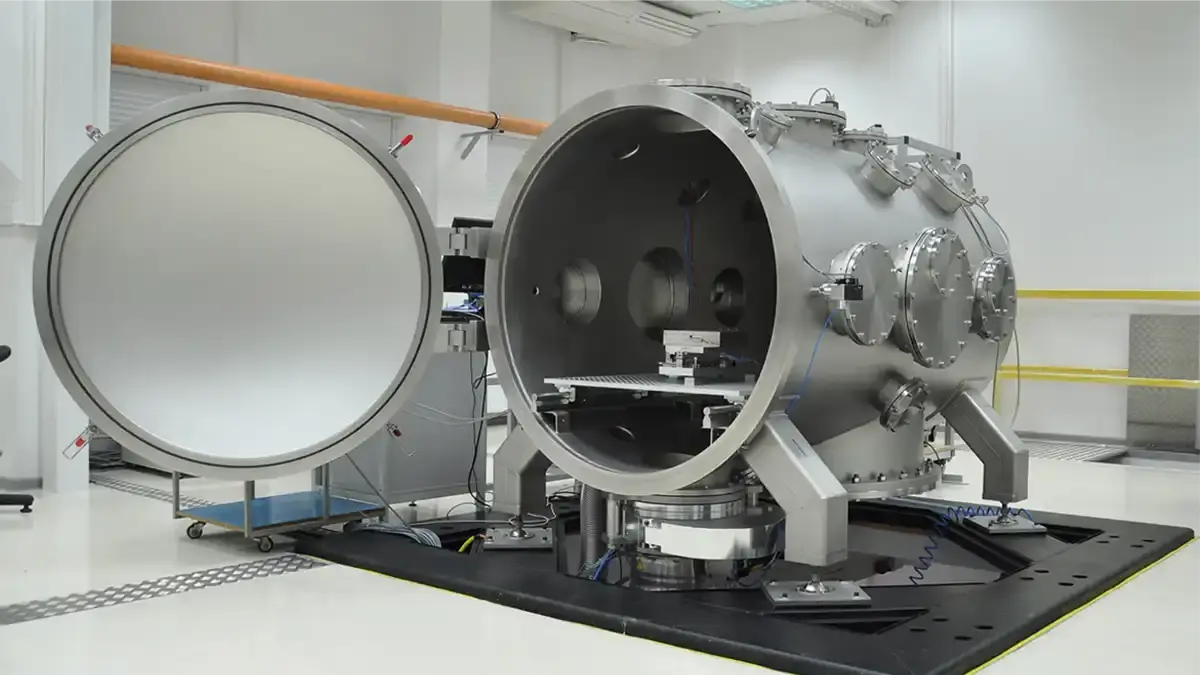
Vacuum chamber for the Institute of Plasma Physics and Laser Microfusion (Warsaw)
Why are vacuum chambers required?
Most satellites, spectrometers and interferometers are tested as a complete unit inside a vacuum chamber. Before they can be tested, however, it is necessary to check that the drive components function properly and are durable. Since the ion thrusters emit large quantities of gas, the chamber sizes and the necessary pumping speeds need to be designed accordingly.
Vacuum chambers
